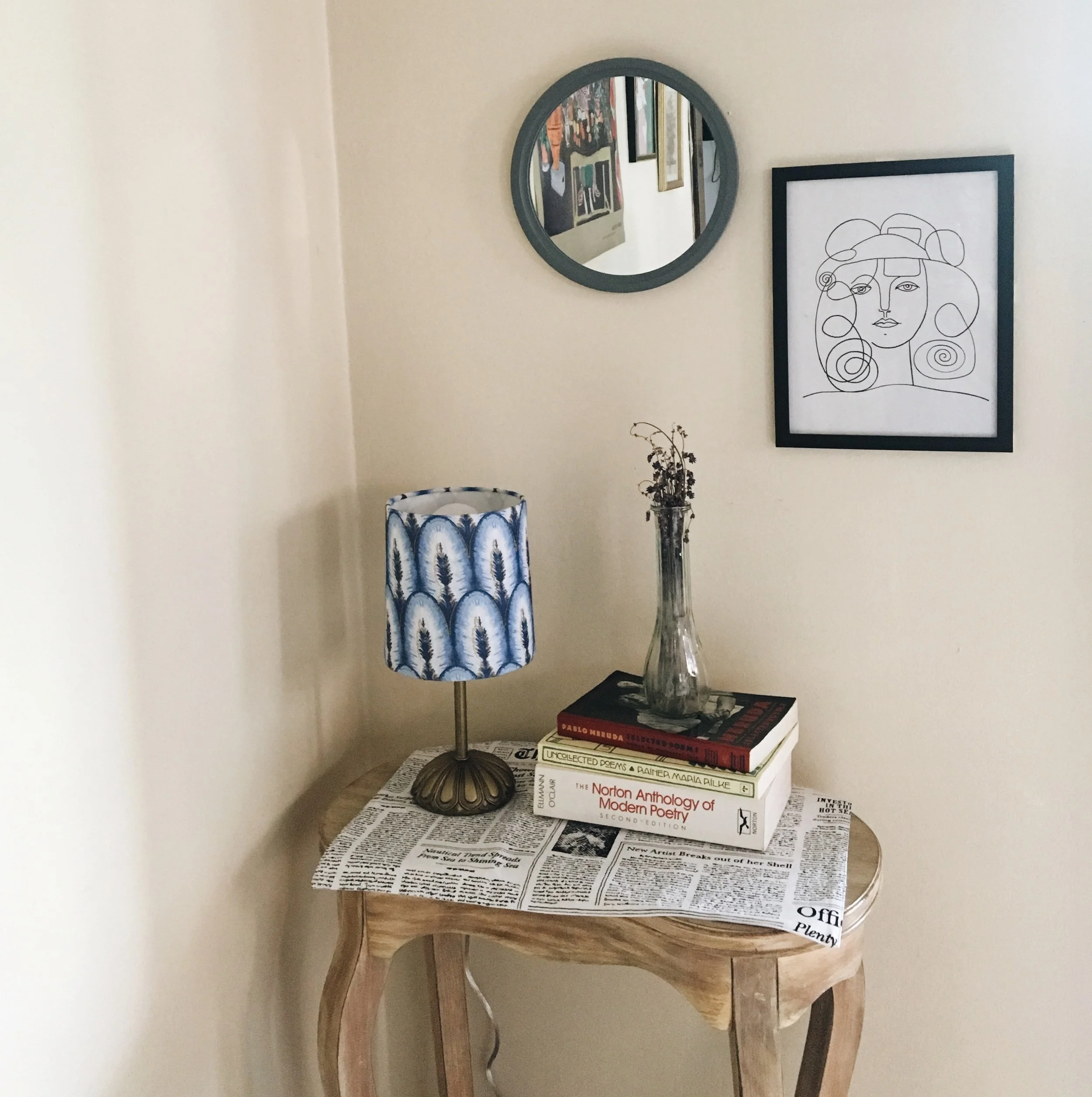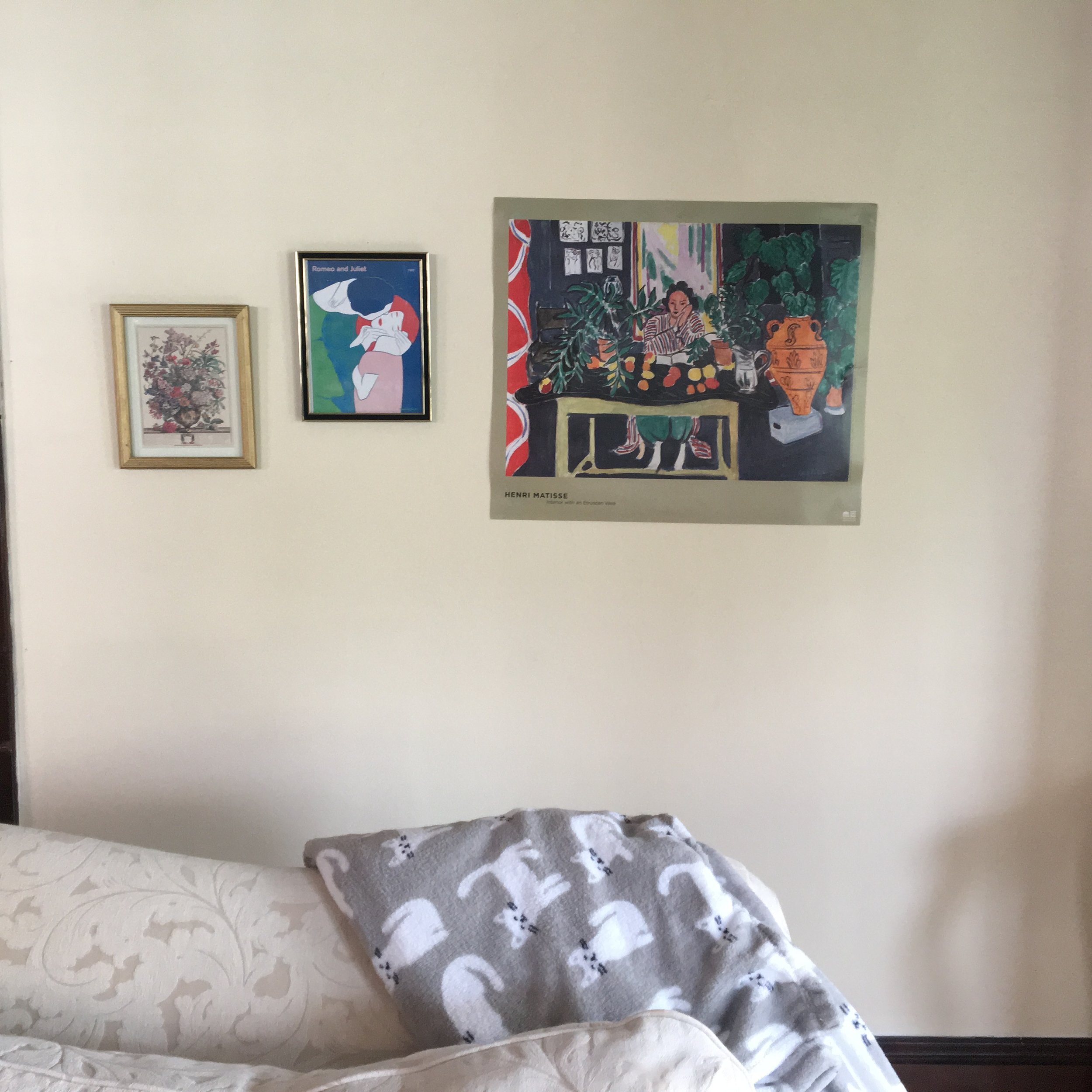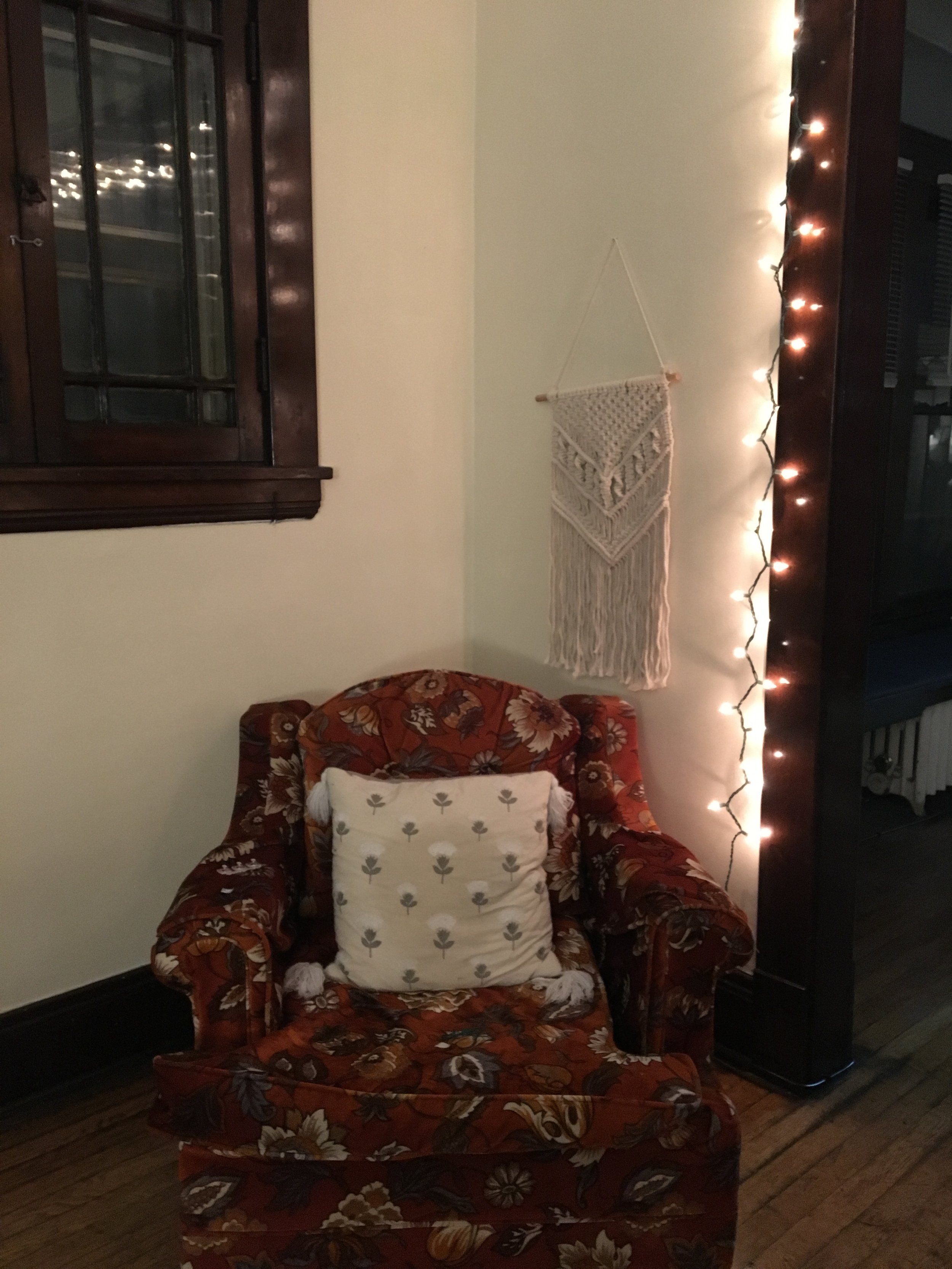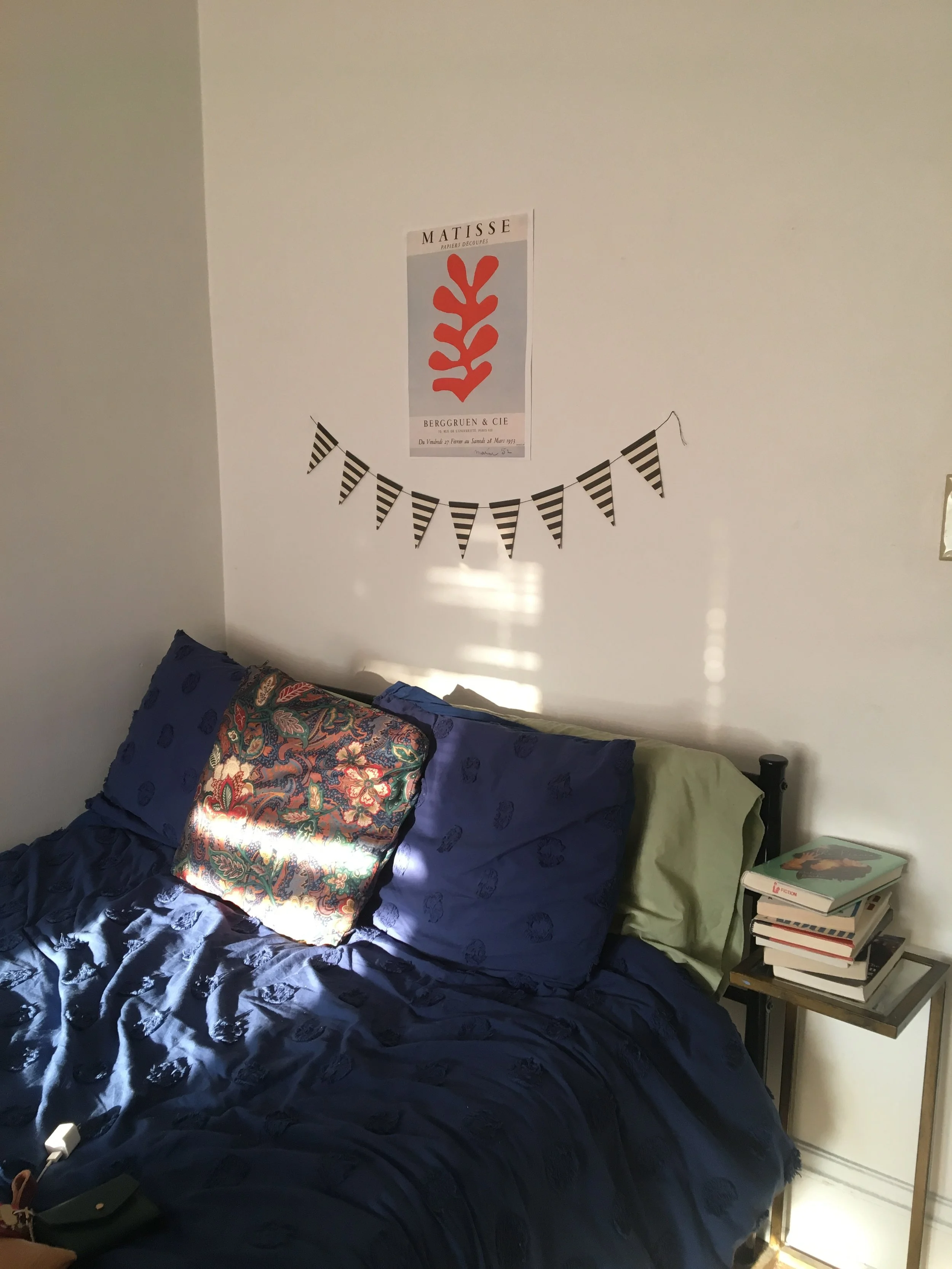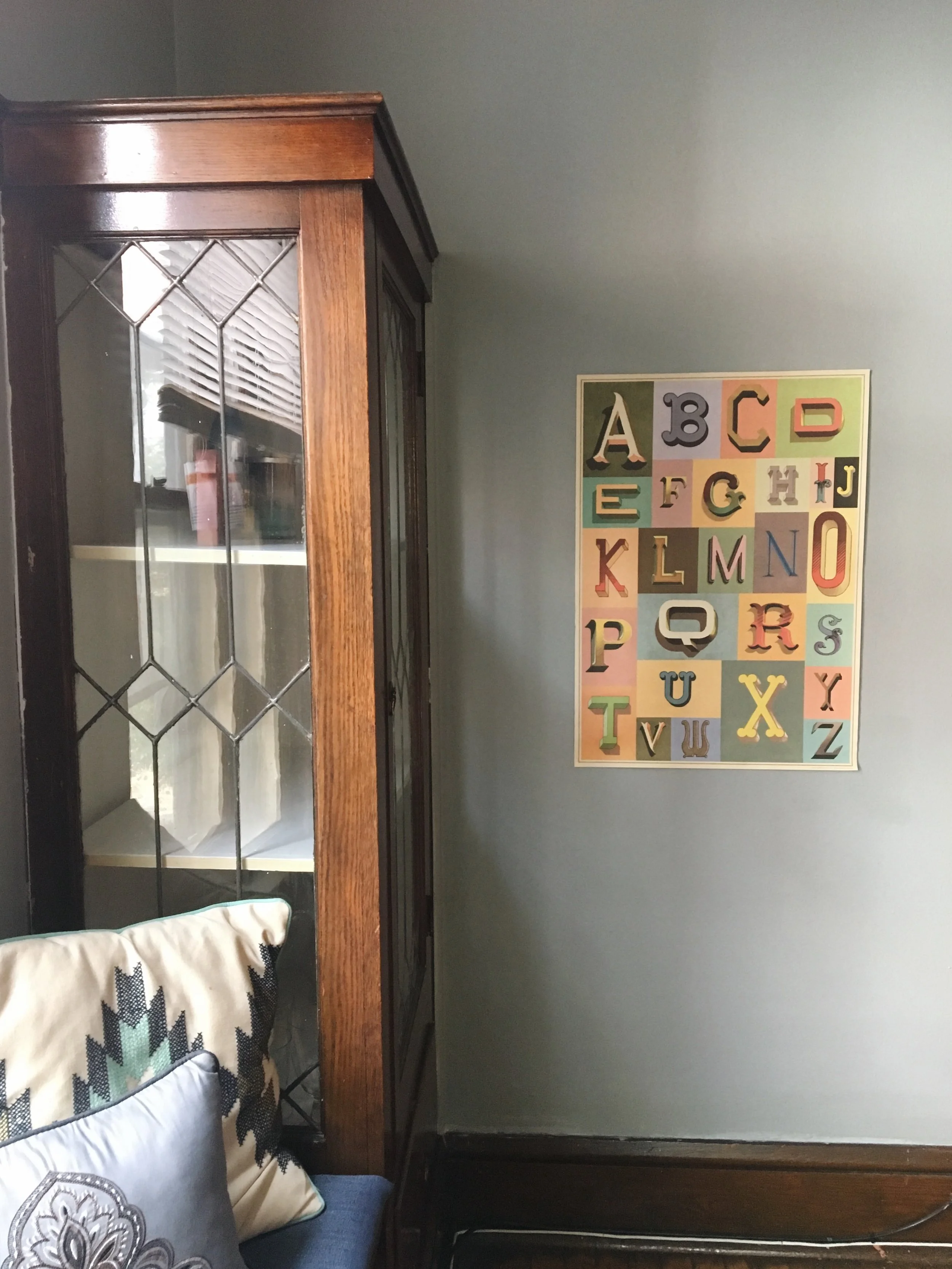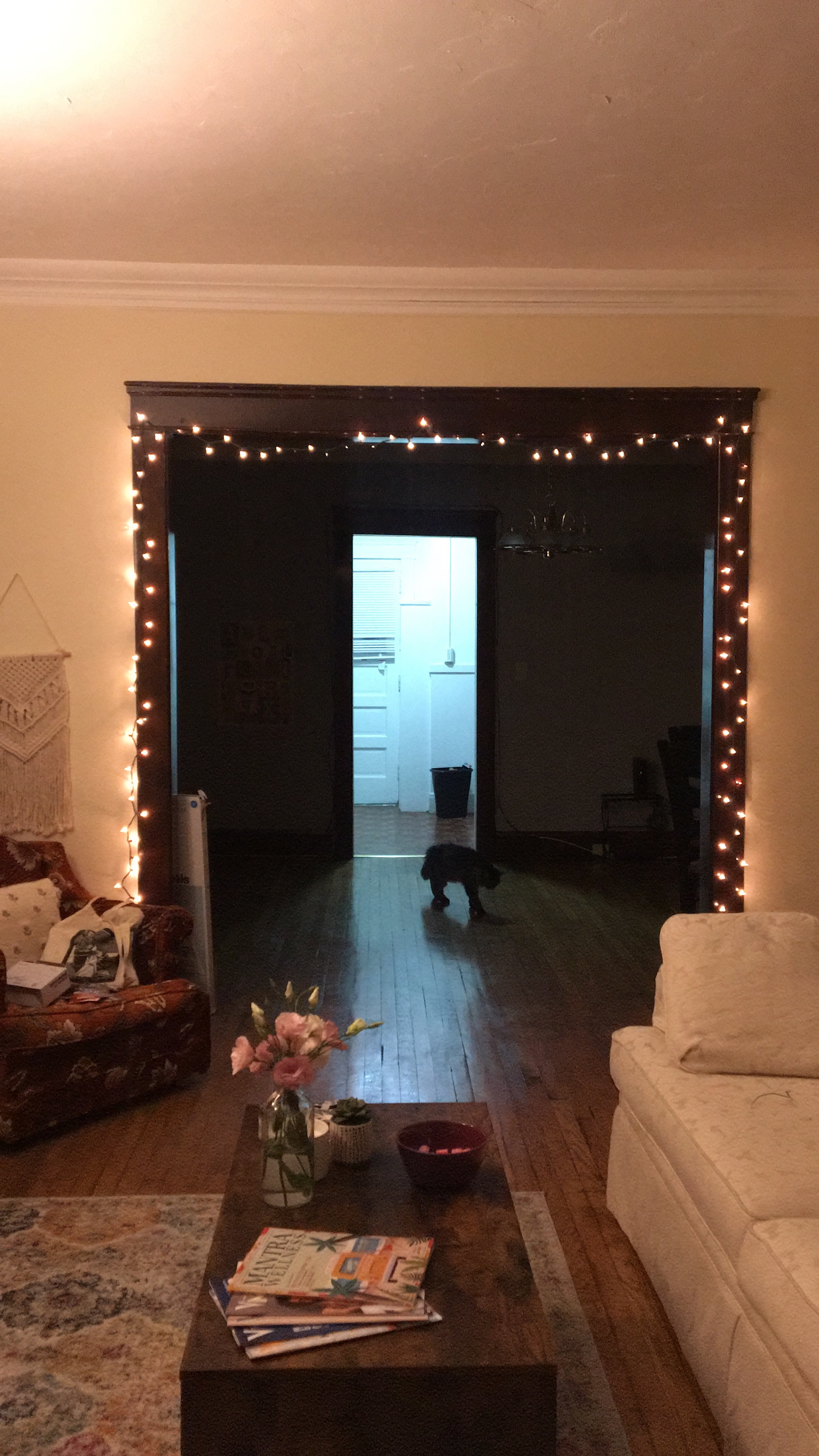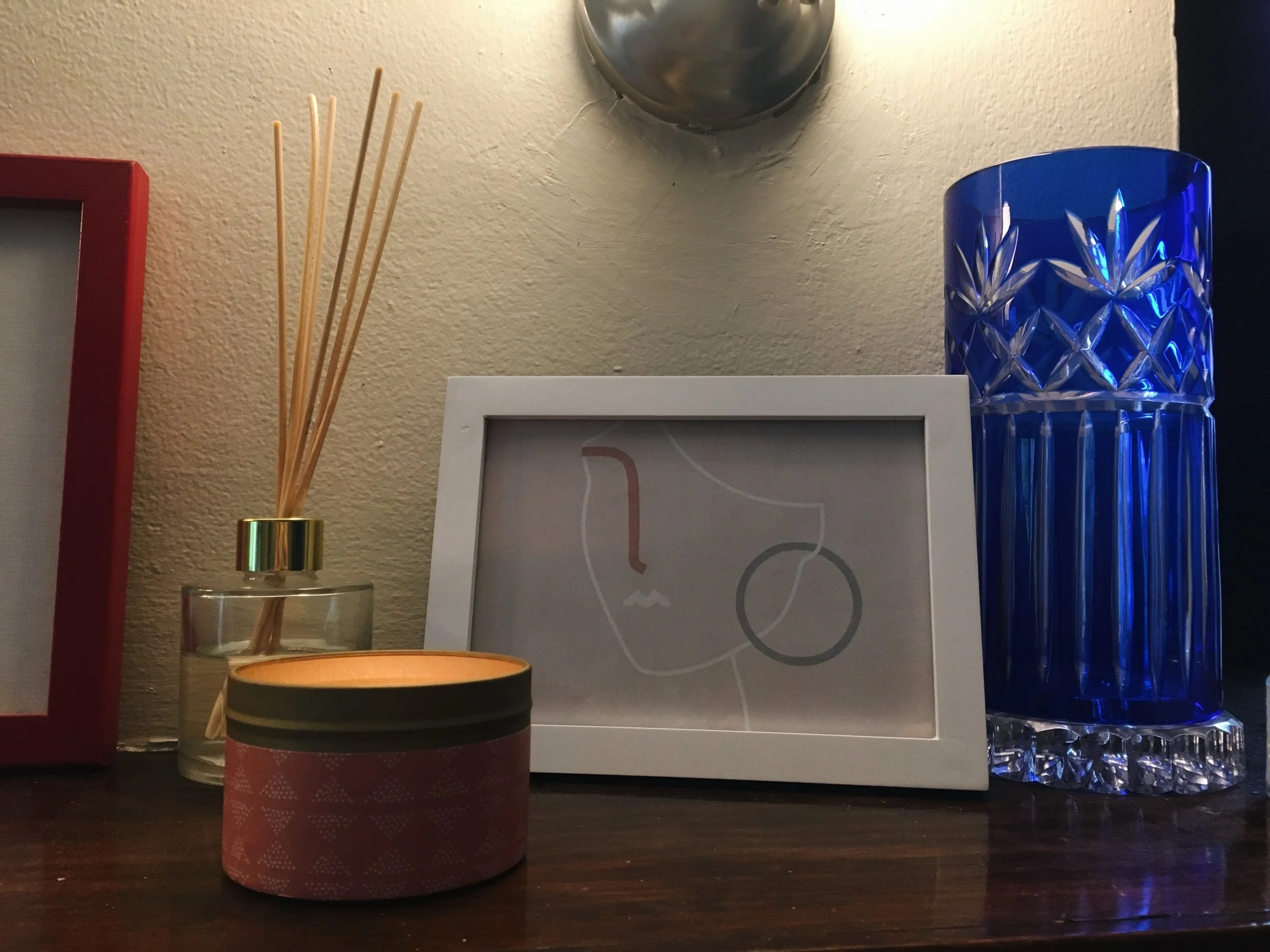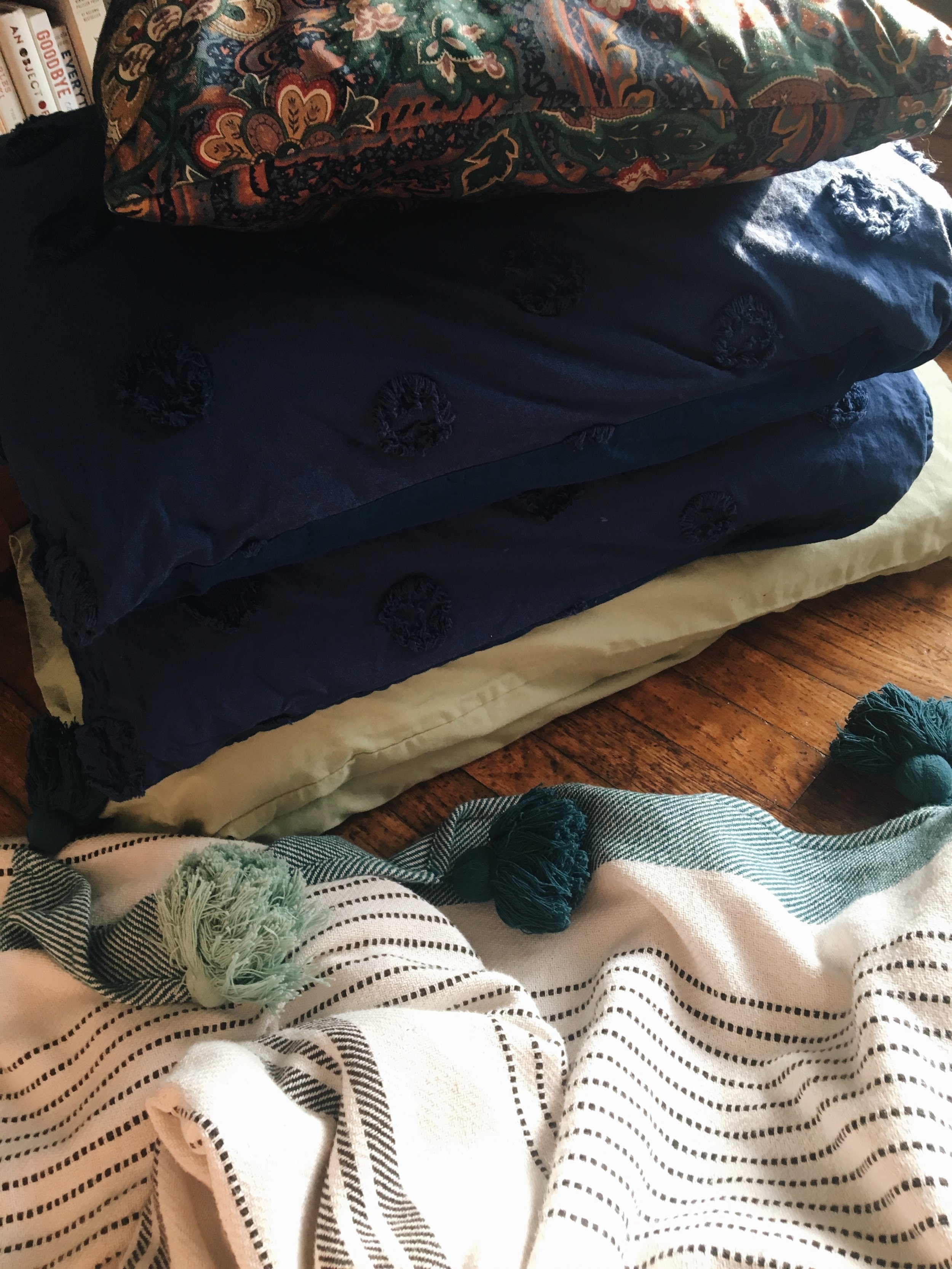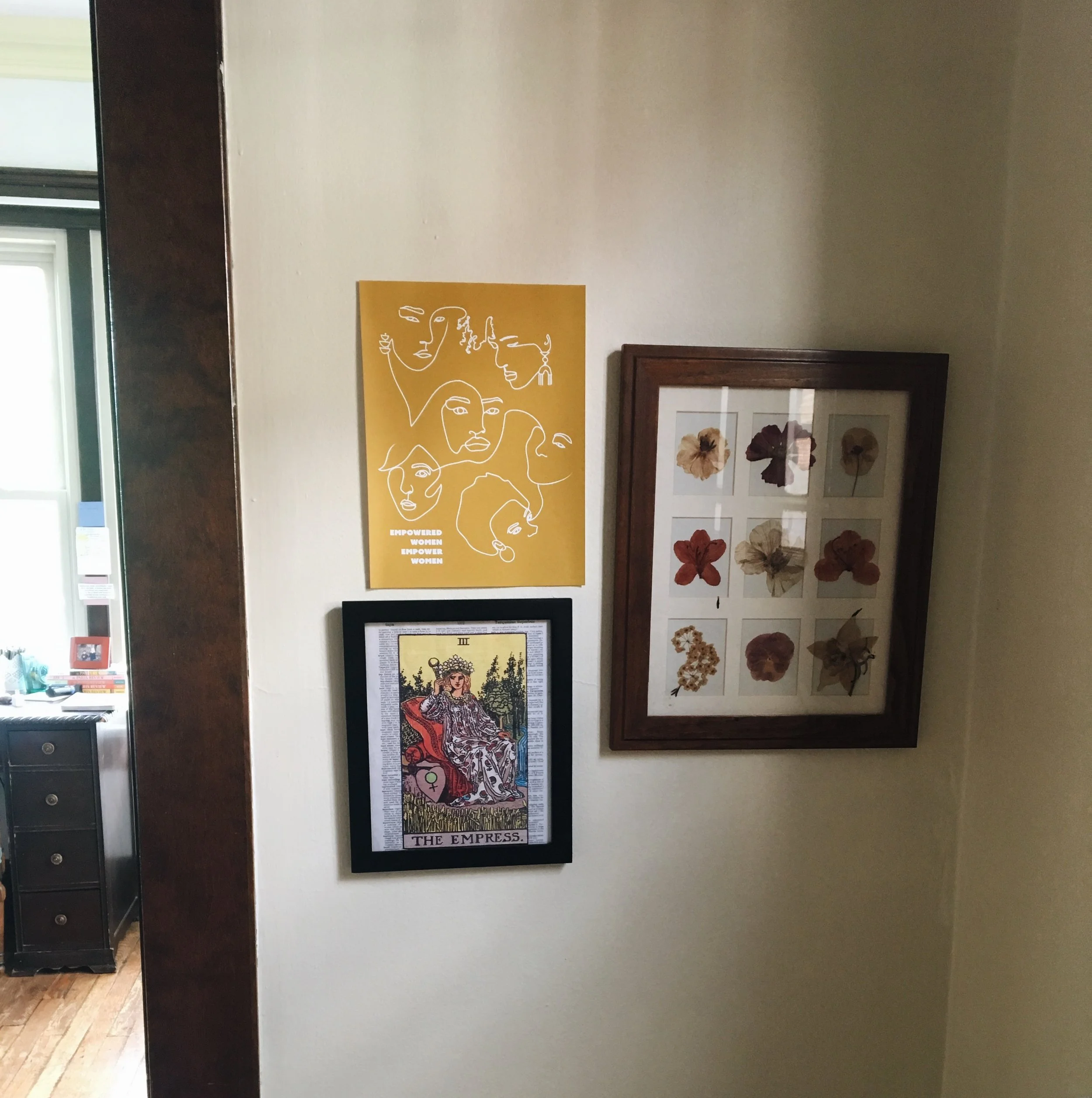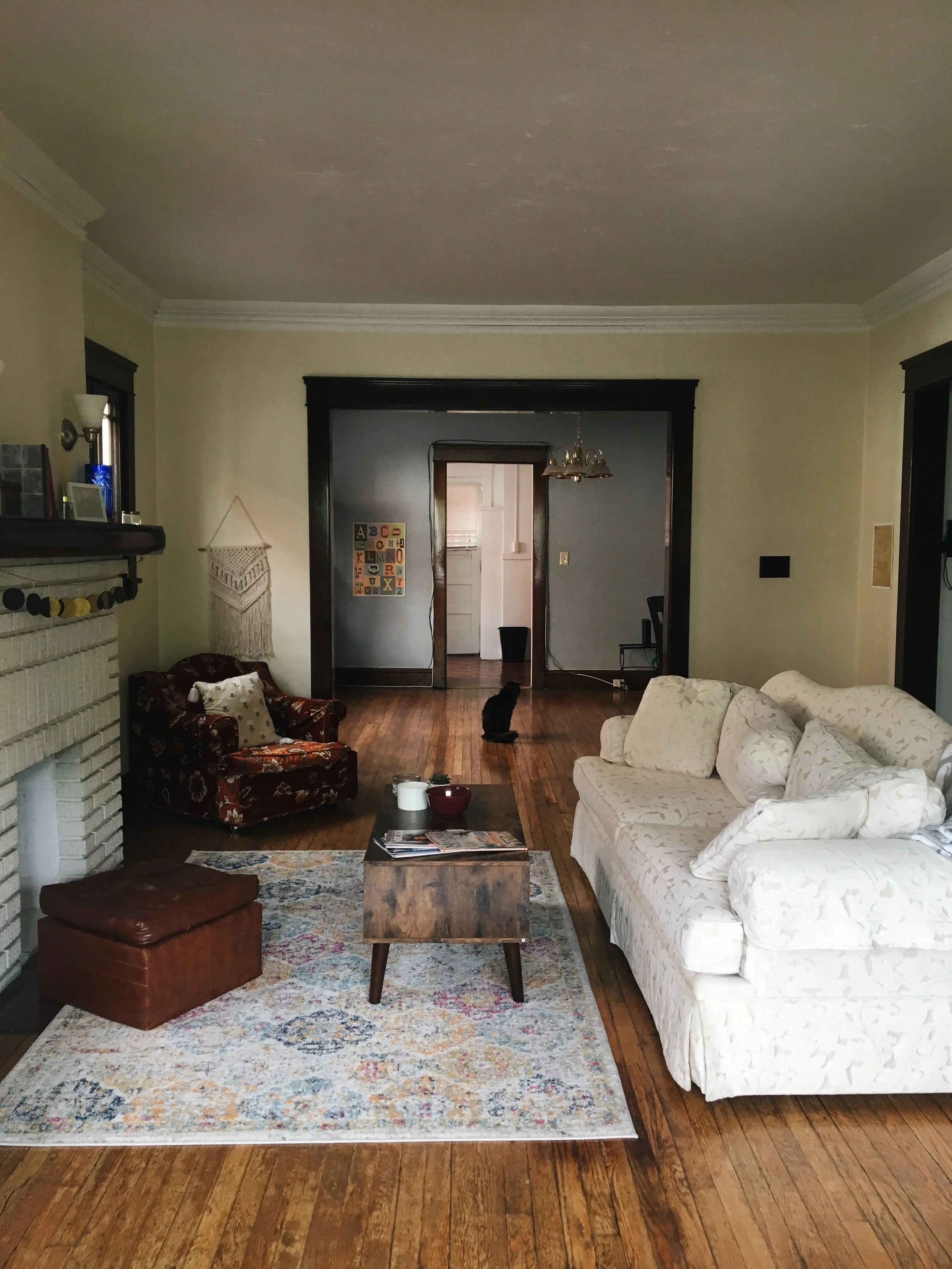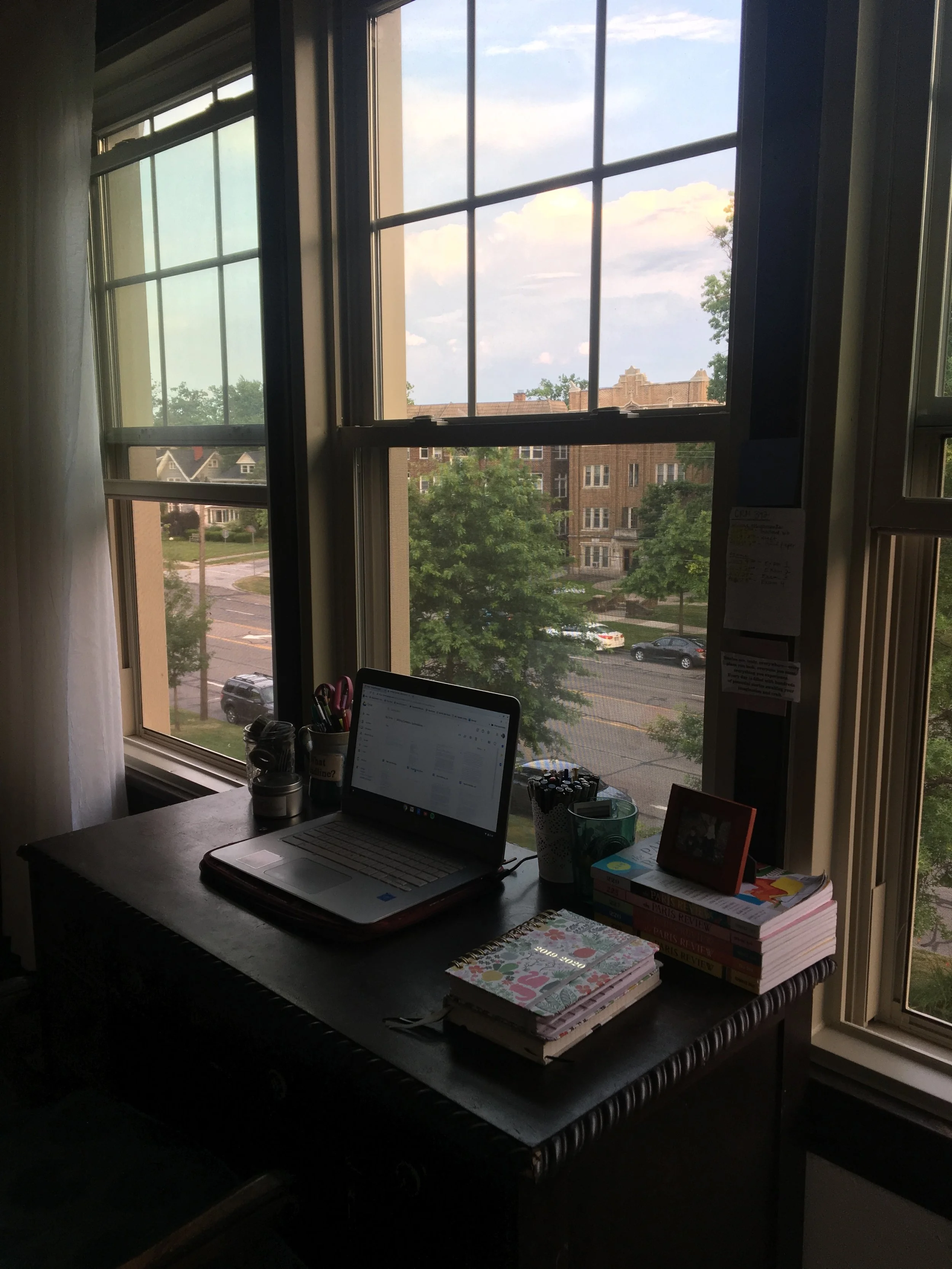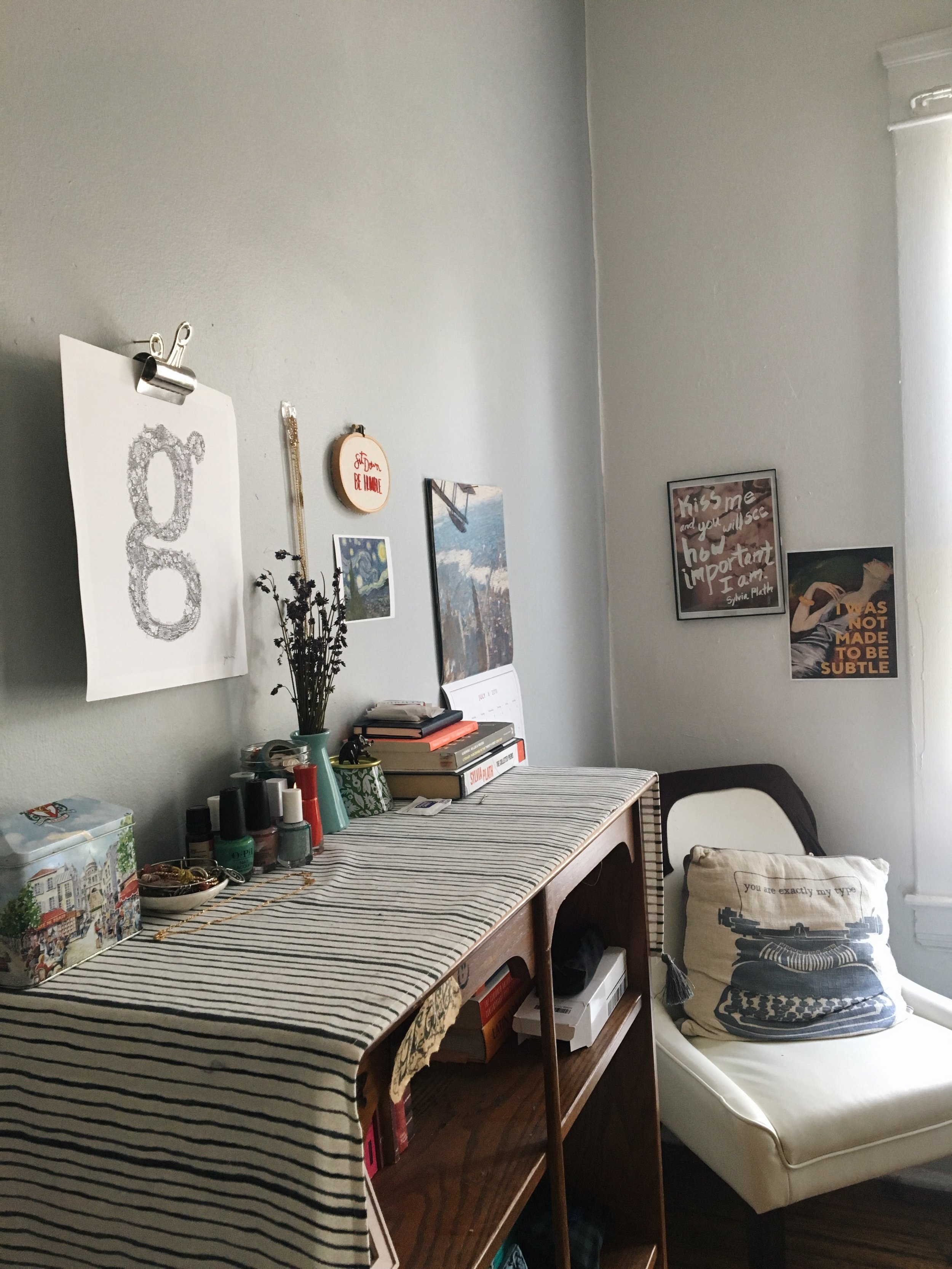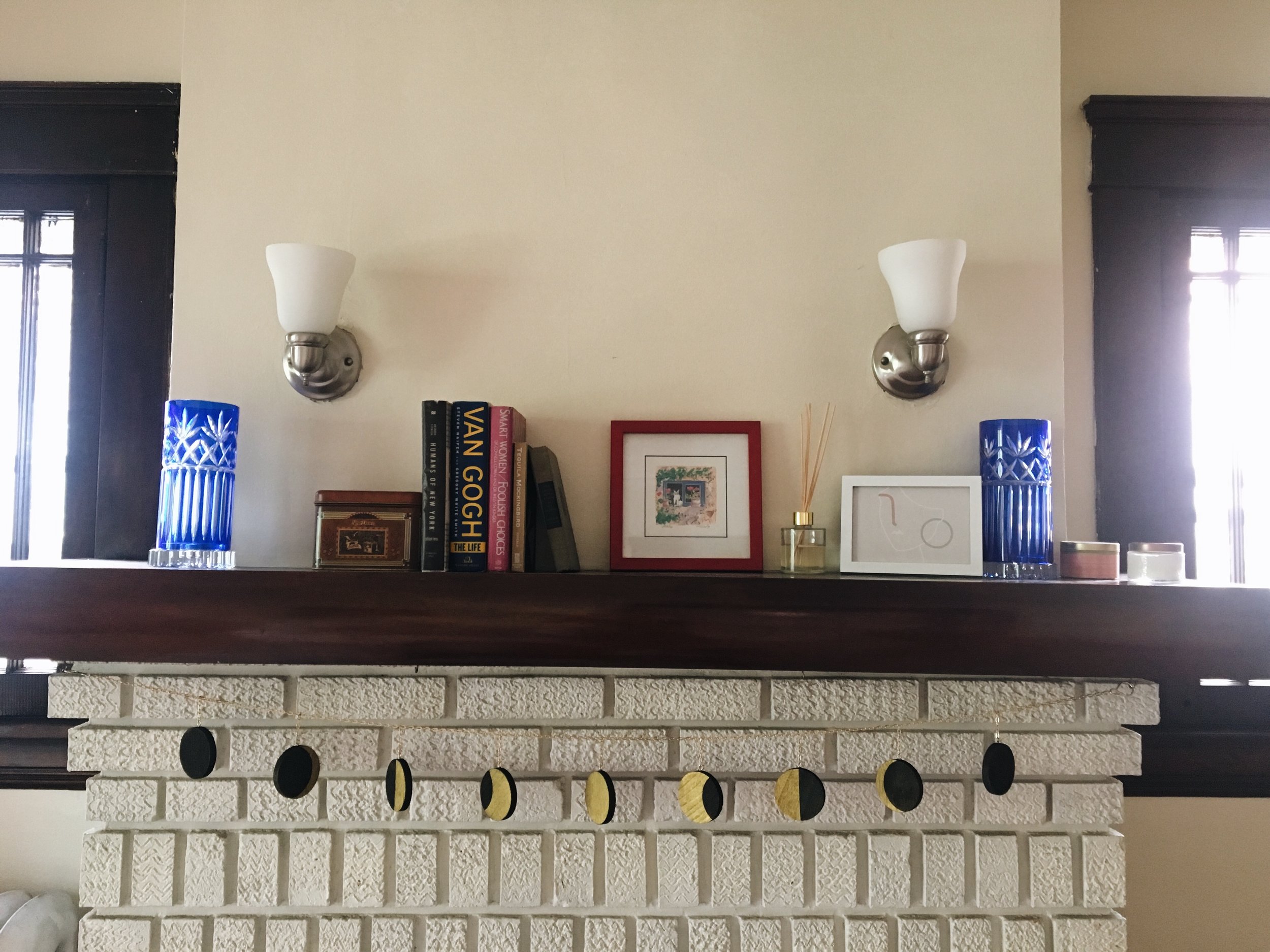i just live here: thoughts on aestheticism
In January, Rosalie Knecht of Literary Hub wrote an article called “Let’s Talk About the Fantasy of the Writer’s Lifestyle,” which I’ve been thinking a lot about lately. The aestheticism of a writer is something that I haven’t considered until I started the process of decorating my own apartment. How a writer or literary type’s apartment is supposed to look, or how a writer is supposed to carry themselves in terms of style is, as Knecht describes, is an Anthropologie catalog.
Anthropologie catalogs present girls who mask lavishness with bohemianism, which of course appeals to so many. There’s glamour in this aspect of consumerism, especially for those who consider themselves writers or artists. But what do these Anthropologie girls do off the page, besides wear outfits that would not survive the criticism of an office setting?
We no longer live in an age where we can be financially cushioned solely by the words we write. I’ve only made money off of two writing pieces so far in my career, and one of my best friends has been freelancing since she graduated. Since I started living on my own, I’ve had to work two jobs to support myself. But while I take pride in the work that I do to pay my bills and rent, I know those things don’t define me and what I create off the clock.
Actors and musicians double as baristas, bartenders, servers. I double as a hostess and college bookstore clerk. It’s all relative. But every day I acknowledge the privilege I have as a person in her twenties who can afford to live on her own, and to have jobs that pay me well enough to do so.
—
Needless to say, my apartment is far from the likes of an Anthropologie catalog. It’s a mix of Etsy, Amazon (only two things I promise), Target, and Savers finds. But my decorating inspiration came from Pinterest, namely my “interiors” board. And as I’ve mentioned in a previous post, I spent most of my childhood watching my mom make the most out of the places we lived in, so her style rubbed off on me a little bit as well.
Rather than limiting myself to one particular aesthetic (like minimalism) — I set myself free. I got more in touch with the part of me who loves art. I tried not to think about Instagram. It’s such a trend to capitalize on our own living spaces for likes. While yes, I sometimes feed into the “Do it for the gram!” mentality when I take overhead photos of lattes and books and outfits, I didn’t want my apartment to solely exist for social media. I wanted to come home to a space that feels good. It’s difficult for me leave things plain, and I love decorating things — the first page of a planner or journal, my laptop, even tying printed bandanas on my purses.
I’ve been living in my current apartment for about five months now, and since I moved I’ve slowly been accumulating things to hang up in the living room, or collecting trinkets from thrift stores to put on the mantel. You have to space out purchases, even though it’s tempting to buy everything you want at once. It’s so expensive to get a place to look the way you want it to, but there are ways to be creative and resourceful, especially if you’re a working Millennial. You don’t have buy outrageously expensive things in order for your apartment to look nice.
—
Here are a few tips I’ve gathered that I want to share today:
Thrift, thrift, thrift! I’ve scored two chairs, throw pillows, artwork, picture frames, kitchen storage, and vases from a thrift store in the town adjacent to mine. On Monday it’s 50% off day, and on other days certain color tags are half off. I’m lucky to live in area with great thrift stores (and to have a grandmother who loves going with me) but do your research based on your location!
Blend, don’t match. My mom gave me this advice when I started to dress myself, but it can apply to non-wardrobe situations too. Not everything in your space has to match exactly! It’s hard (and costly) to do that. As long as a few of your pieces have similar colors, you’re good to go. When I was done decorating my bedroom and my living room, I realized that my living room has a warm color scheme and my bedroom has a cool color scheme — and I did this completely unintentionally. Eclecticism gives a space more personality.
If you’re in college, use your printing credits! If I see a print or design I like on Etsy, I opt for the “Digital Download” purchase option, and use my color printing credit at school rather than paying extra for shipping. Maybe printer paper isn’t the best quality, but you can’t tell once it’s in a frame! Don’t use too much of the color ink at your school library, though. If you have a local library card, you can utilize your printer access there, too.
Support independent artists / shop local I’m not saying to buy everything from little boutiques and shops, but even one purchase makes a large impact on a community. Some places I’ve shopped from for my space include RedHillPrintables, OldArtPrintables, and OhFineArtPrints.
The dollar section at Target is your friend. Sometimes there’s small decorative things in the dollar section at Target, like mirrors, shelving units, or storage containers. Other than that, my favorite home brand at Target is Opalhouse—it’s playful and tasteful at the same time. My sheets, comforter, and throw blanket are Opalhouse, and while I bought them months apart, the colors still go together.
If you live with someone, talk to them first before you start decorating. I have a roommate who is the sweetest angel and I told her I wanted our space to feel like it belonged to the both of us. She’s a bit older than me, and she was an English major when she was in college, so we’re similar in that regard. But she gave me her blessing to decorate, and even said that she likes my taste. I still was careful not to go too over-the-top.
Piles of books. Various liquids of amber and burgundy hues in glasses. Clothes strewn about on furniture — blouses, scarves, stockings. Our knowledge of the writer’s lifestyle is derived from the likes of Hemingway’s prose and Anais Nin’s diaries, and even the flashback scenes from “Midnight in Paris.” But these depictions shouldn’t be our only reference points for what a writer’s life looks like. Victor Hugo once said “A writer is a world trapped inside a person.” The words “person” and “persona” are derived from the same Latin word, meaning “a false face” worn by actors in plays, usually made of clay or wood. While these two words have the same root, they have entirely different meanings regarding personal identity. I think we so often think of writers as characters because of the way they’re portrayed/described in books, television, films, etc. It’s damaging to think of yourself as a persona rather than a person, because your life shouldn’t be a performance. And a lifestyle, to a certain extent, especially in the Digital Age, can be considered a performance.
Last semester in one of my workshop poems I wrote “A writer doesn’t look like anything / Imagination is our commonplace” — at all of the open mics I’ve been to, everyone who reads or attends looks completely different. I don’t think you can fit all of the characteristics of a writer into a box — we’re not just one thing, or two things, or three things. Mind over matter. Person over persona. Everyone who writes expresses themselves differently, and aesthetic or not, there’s still beauty and authenticity there. I don’t want to think of myself as someone who fits into a mold or an idea of what a writer should be, and the same goes for my apartment. I just live here.

